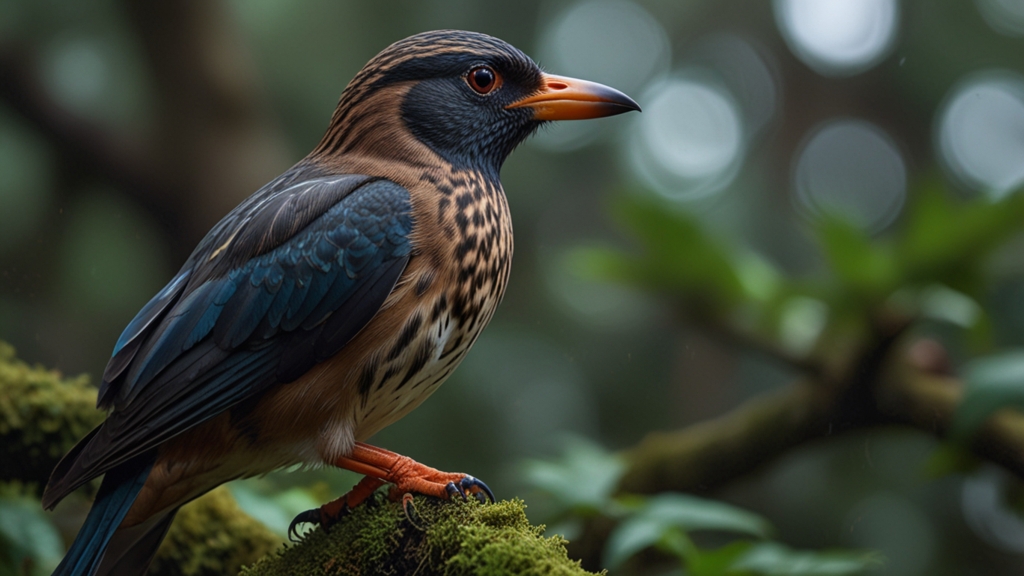Hope for the Future: Innovative Solutions for Endangered Wildlife
Endangered wildlife around the globe faces a perilous future, as numerous species teeter on the brink of extinction. Human activities, such as deforestation, poaching, and climate change, have significantly contributed to this alarming decline in biodiversity. However, there is a glimmer of hope on the horizon. Through innovative solutions and collaborative conservation efforts, we can strive to protect and preserve endangered species for future generations.
Advanced Monitoring and Tracking
The advent of technology has brought with it new tools for wildlife conservation. Advanced monitoring and tracking systems allow researchers to closely observe the behaviors and movements of endangered species.
"By using GPS collars and drones equipped with cameras, scientists can gather crucial data on animal habits, migration patterns, and threats, enabling more effective conservation strategies."
Such technologies provide a real-time feedback loop, allowing for prompt interventions when animals are in jeopardy. Furthermore, artificial intelligence (AI) is being deployed to analyze these large datasets, helping to predict potential risks and develop preemptive countermeasures.
Genetic Rescue and Biobanking
As the genetic diversity of many species dwindles, genetic rescue techniques offer a lifeline. Biobanking is one such method that involves storing genetic material from numerous individuals within a species. This genetic repository can later be used to bolster population numbers through methods such as cloning and selective breeding.
"Biobanking is essentially an insurance policy for endangered species, preserving the genetic essence of animals that may otherwise be lost forever."
Moreover, advancements in reproductive technologies, such as in vitro fertilization (IVF), empower scientists to facilitate breeding programs that maximize genetic health and resilience, creating more robust populations.
Community Involvement and Eco-friendly Economies
Efforts to save endangered wildlife are most successful when local communities are actively involved. By engaging local populations in wildlife conservation through education and economic incentives, there is a greater chance of enduring success.
Eco-friendly economies—such as wildlife tourism and sustainable agriculture—offer communities an alternative source of income while promoting the preservation of biodiversity. Empowering individuals with the knowledge and economic means to protect their natural habitats ensures that conservation efforts are both sustainable and impactful.
Legal Frameworks and International Cooperation
While grassroots efforts are critical, overarching legal frameworks and international cooperation play a fundamental role in protecting endangered wildlife. Legislation that enforces anti-poaching laws, habitat protection, and species-specific conservation measures create a structured approach to preservation.
"Global cooperation ensures that efforts are not isolated and that there is a unified front in the fight against species extinction, transcending borders and political boundaries."
Collaborative treaties and conservation agreements, such as the Convention on International Trade in Endangered Species of Wild Fauna and Flora (CITES), exemplify the power of united global efforts in wildlife protection. Sharing resources, knowledge, and best practices across nations magnifies the impact of conservation initiatives.
The Road Ahead
The future of wildlife conservation lies in the integration of innovative solutions, community engagement, stringent legal measures, and international partnerships. Although the threats to endangered species are formidable, the combined effort of technology, science, policy, and human compassion offers a beacon of hope. By continuing to explore and implement these innovative strategies, we can look forward to a future where endangered wildlife not only survives but thrives.
In sum, the plight of endangered wildlife might seem daunting, but the amalgamation of technological advancements, community initiatives, and international cooperation demonstrates that there is indeed hope for the future. With unwavering commitment and innovative solutions, we can turn the tide and ensure a thriving planet for all species.










